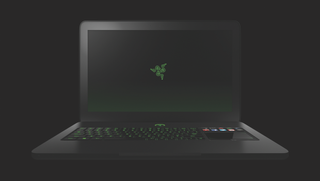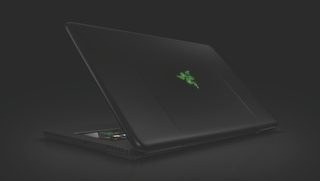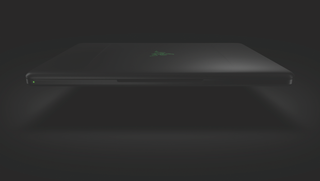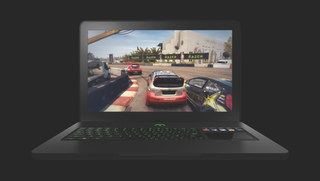Razer Blade review - 8 reasons to buy it (and 6 not to)
We put Razer's new gaming laptop through its paces
Good: All the right ports

The original Blade lacked the ports and output necessary to make it a true gaming desktop-replacement. It didnt have USB 3.0 and the speakers werent up to par with others in its class. Thats all been fixed this time around, as the Blades 3 USB 2.0 ports were upgraded to USB 3.0 and the speakers are now serviceable.
While they wont replace a surround sound setup, they can achieve similar audio quality via the HDMI 1.4 port that allows for Integrated Digital 7.1 Surround Audio Support via Dolby Home Theater Audio. Unsurprisingly, it sounds great. The same HDMI port can also be used to output the screen to a larger display, making it a great portable alternative to lugging your desktop PC out to your living room or LAN party.
Bad: Small Storage Options

The Blade comes equipped with two storage partitions, a 500GB 7200RPM HDD and a 64GB SATA III SSD. The HDD is the primary storage solution, while the SSD is used as a data cache for the HDD. The system works really well, as both are extremely fast, but its also not ideal, as the drive sizes are somewhat small, making for constant data shifting. Thats not something you want to be doing if its going to be replacing your desktop.
Only 500GB as a primary storage device? Thats notably small, especially compared to the 1TB and 2TB drives in comparable gaming laptops. The option to upgrade to a higher capacity storage drive would be greatly appreciated.
Good: Minimal aesthetics

It isnt often that a Windows PC is lauded as minimal. Usually they come pre-installed with loads of bloatware that slow down the OS and keep it from running at its full potential. Luckily, that isnt the case with the Blade, as it really only comes with one piece of software installed.
It also isnt covered in stickers letting you know whats inside. Razer probably figures that if youre willing to drop $2500 on a gaming laptop, you know that it runs Windows on a Core i7 processor, so it doesnt need to remind you with stickers covering the inside.
Good: Thin all around

Make no mistake, the Razer Blade is thin. Its one of the thinnest gaming laptops on the market, standing only 0.88 inches. Its staggering that they were able to fit as much technology as they did into a chassis as small as this.
Sign up to the 12DOVE Newsletter
Weekly digests, tales from the communities you love, and more
This thin profile extends to the power brick as well, which puts its brethren to shame. Its slim, light, and unobtrusive, making it an easy choice when deciding whether its worth the extra weight of packing it with the Blade on a trek. It does tear away into two parts still, which is always risky as it is easy to forget or misplace on part and be stuck without a way to charge the Blade.
Bad: DAT PRICE

While the Razer Blade might seem a bit overpriced at $2,500, its also significantly cheaper than the previous iterations, which clocked in at $2,800, despite having weaker components. Its also competently priced compared to the other options in the same range, which makes sense when you look at the parts that went into making the Blade one of the premier top-of-the-line gaming laptops.
Its all a value judgement, but the sticker shock of seeing that $2,500 price tag might scare away some potential customers before they even see what the Blade has to offer.
Turn up all the settings

The Razer Blade isnt for everyone. Its large and expensive, but its also extremely powerful and thin for its class. Theres a delicate balance; one that may throw you off but also might sell you on it.
At the end of the day, it all depends on how youll use it. It makes for a great desktop replacement, but it might not work as well as a truly portable gaming substitute. Its loud, hot, and looks like a stealth bomber. That doesnt exactly scream covert gamer. It may have some issues, but its also a great piece of hardware. You could do a lot worse than to choose the Razer Blade as your sole gaming device.
And if you're looking for more, check out the Best Gaming Headset and Best Gaming Mouse, because youll need one.
